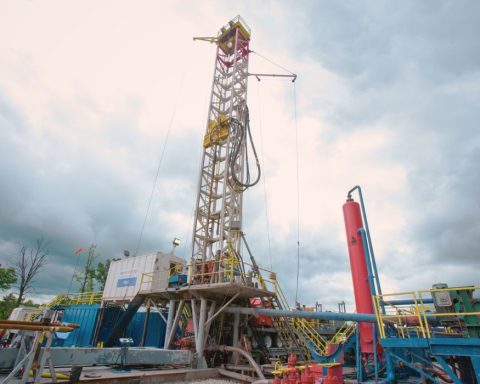When it comes to decarbonizing the Canadian economy, heavy industries, such as steel and concrete manufacturing, might be the hardest to untangle from their carbon emissions.
That was one of the takeaways from a panel Wednesday that was part of a series on the Corporate Knights Earth Index. The initiative tracks Canada’s progress on decarbonizing its economy in a variety of carbon-intensive sectors, from buildings and transportation to agriculture and power. Heavy industry – the manufacturing of cement, steel, chemicals, pulp and paper, and non-ferrous metal smelting and refining – has seen only a slight reduction in its greenhouse gas emissions since 2005, according to Corporate Knights analysis, something that will need to change for the country to reach its climate ambition.
Heavy industry’s contribution to Canada’s GDP is 2%, but it is responsible for 9% of the country’s emissions. And to meet Canada’s commitment to cut emissions from 2005 levels by 45% by 2030, these industries would have to decline at an average rate of just over 4% a year. Lowering these emissions will not be easy without a complete rethink of these industries’ processes, said Ralph Torrie, head of research at Corporate Knights. “Incrementalism is not going to be an effective strategy in this case,” he told the panel.
This is because roughly half of these industries’ greenhouse gas emissions come from the chemical processes they use to manufacture products. So it isn’t simply a matter of electrifying their energy consumption. A larger, more complex transformation has to happen. Recycling and disruptive technologies will be key in that transition, said Torrie, but most important will be speed.
By taking bitumen and converting it to carbon fibre alone, it will add so much value to our economy. And it will transform our economy, not transition it.
—Laura Kilcrease, CEO of Alberta Innovates
When it comes to cement, Chris Bataille, an energy economist with the Paris-based think tank Institute for Sustainable Development and International Relations and a professor at Simon Fraser University, said a big chunk of emissions can be eliminated through better design that minimizes the amount of cement used in buildings. But carbon capture technology will also be necessary to reduce emissions, he said.
In Edmonton, a pilot project is under development at a Lehigh Cement plant that hopes to capture more than 90% of the carbon dioxide that comes from the facility’s flue gas. The project is a first for the North American cement industry and follows a Norwegian carbon-capture cement project being built in Brevik, Norway, by HeidelbergCement.
Panellists also exalted the potential of research exploring “bitumen beyond combustion,” which entails tapping Canada’s bitumen deposits to make useful materials beyond oil and gas, such as carbon fibre (a strong, lightweight material used in some electric cars). Laura Kilcrease, the CEO of Alberta Innovates (which funded a $15-million competition to further develop this technology), says that this is not only an alternative way to use an abundant Canadian resource, but an important avenue for increasing its value. “By taking bitumen and converting it to carbon fibre alone, it will add so much value to our economy. And it will transform our economy, not transition it,” she said.
Panellists agreed we’ll need a national conversation about how these critical industries make the necessary changes to arrive in a net-zero future. And a large part of that conversation will need to involve Indigenous communities, said Jean Paul Gladu, a founder and principal at Mokwateh Group who serves on Suncor’s board of directors. Gladu said that we won’t be able to achieve our goals without Indigenous consent.
And just as there is little time for incrementalism when it comes to the climate crisis, Gladu said that the same applies to Canada’s relationships with its Indigenous Peoples. “We’ve got to start thinking bigger in this country,” he said.







